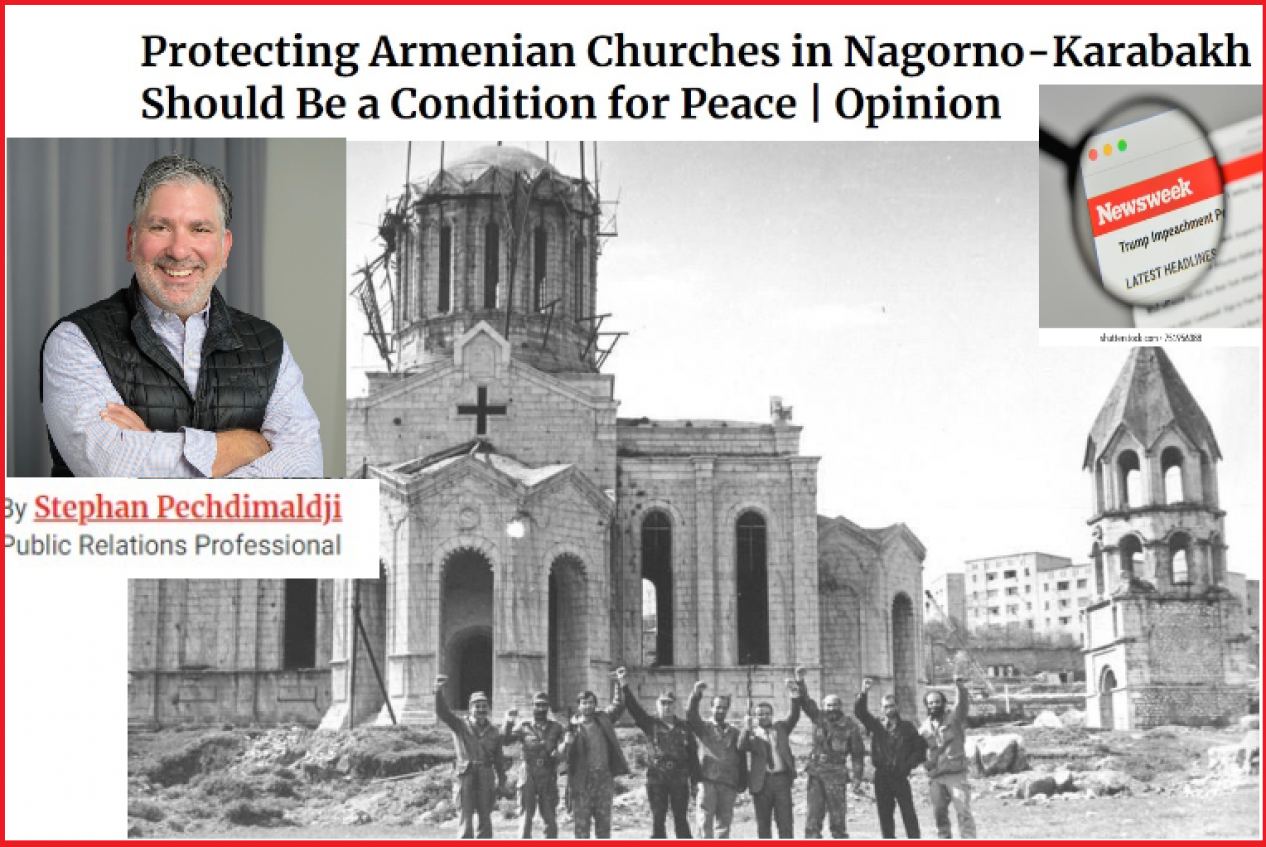
Renowned news magazine Newsweek published an article by Stephan Pechdimaldji titled, “Protecting Armenian Churches in Nagorno-Karabakh Should Be a Condition for Peace,” a piece filled with serious distortions, false accusations, and blatant lies.
Faktyoxla. Lab decided to investigate the claims made in the article.
From the outset, it should be noted that our investigation aims to demonstrate that such a reputable media outlet as Newsweek has flagrantly violated two core principles of journalism: impartiality and the dissemination of accurate, verified information.
a) Media’s impartiality
First let us share information about the author.

Stephan Pechdimaldji was born in San Francisco.
He was Communications Director for Yahoo and CBS Interactive, a director at SparkR, and for the last seven years, he has been a Vice President at Edelman Earned Media. (Link). We will share our extensive investigation into Edelman’s involvement in the anti-COP29 campaign.
Attention! Multiple sources claim that Stephan Pechdimaldji (whose name does not reveal his Armenian identity) is the “grandson of Armenian genocide survivors and a first-generation Armenian American.”

We are far from being nationalists and approach this matter from a straightforward journalistic point of view. However, we must acknowledge that anything he writes - whether on the issue of Karabakh or events in Ottoman Turkey in the early 20th century - reflects the biased perspective of an interested party. His ethnic background plays a central role in everything he writes for Newsweek or Muck Rack.
b) Dissemination of accurate, verified information
Let us clarify some claims that his article contains:
1) Author used a phrase “disputed territory of Nagorno-Karabakh (Artsakh)”.
First of all, the “Nagorno-Karabakh Autonomous Oblast” (Nagorno-Karabakh is the Russian term) was created three years after the establishment of the Soviet Union following the collapse of the Azerbaijan Democratic Republic in 1920 in Azerbaijan’s geographic region called Garabagh. This entity currently does not exist; that region is now referred to as the Karabakh Economic Zone of Azerbaijan. The name “artsakh” refers to the unrecognized (not even by Armenia) self-proclaimed, terrorist junta created between 1991 and 1994 on Azerbaijani lands occupied by Armenia and that “existed” for 28 years.
There is not a single document, not a single UN resolution that refers to Azerbaijan’s Karabakh Economic Zone as a “disputed territory”. The fake term “artsakh” is used only by the separatist Armenians and their biased sympathizers - Western media outlets.
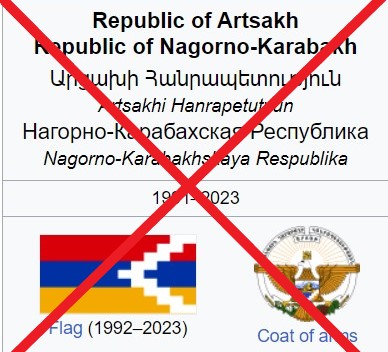
Even the fact that an Armenian population lived in Karabakh does not mean that those lands belonged to them. Just as in the U.S. state of California - where Pechdimaldji hails from - in the French city of Marseille or the Russian Federation’s Krasnodar Krai, there is a significant Armenian community. This is also true for the Karabakh Economic Zone of Azerbaijan. The only difference is that Armenians living in California, Marseille, or elsewhere have not taken up arms, violently expelling the indigenous population of the areas where they settled (Khojaly Genocide, Balligaya massacre, Aghdaban Genocide, Garadagly Genocide), and forced those people into a life of internally displaced persons for 28 years.
2)The author claims that “as the first nation to adopt Christianity in 301 AD, Armenia's identity and culture has been closely defined by its Christian faith, which makes these historical symbols so important to their survival as a people”
It is a totally false and manipulative claim.
There is no such nationality as “Armenian.” They are Hay/Hayk, and that is how Armenians identify themselves. If we look at the etymology of the word “Armenia,” we can see that it traces back to the word “Arima,” which can be found in ancient Greek sources (Richard Talbert, ed. (2000). Barrington Atlas of the Greek and Roman World. Princeton University Press, p. 66, and directory notes accompanying. ISBN 978-0-691-03169-9.)
In ancient Greek mythology, this area was associated with Zeus’s adversary, Typhon. In Homer’s Iliad, it is the land where the Arimoi lived, called the “couch of Typhoeus.” The historian Callisthenes (4th century BC) located the Arimoi and the Arima mountains in Cilicia, near the Calycadnus River and the Corycian cave. It is no coincidence that there is a town called Ermenek in present-day Türkiye, in the province of Karaman. According to the Behistun Inscription (year 520 BC), “Armini” (Armenia) means “elevation” or “elevated country.” In Urartian sources (7th century BC), “Arme” was placed between the Tigris and Euphrates rivers. Later, Strabo attributed Arimo to Cilicia and Syria, calling them Arameans.
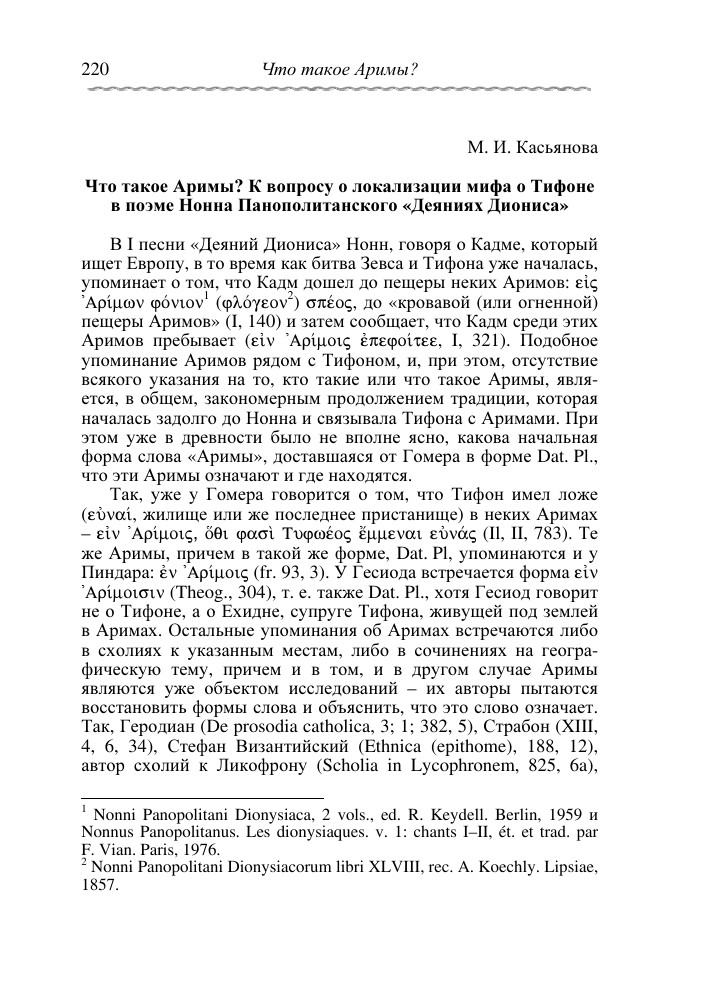
In his work, Professor J. Kembell (The Hittites: Their Inscriptions and Their History, Montreal, Toronto, 1890) showed that “Armini” derives from the tribe names Arima/Arimi/Erme. These tribes were part of the Nairi peoples group. Ancient Egyptians called them Naharina of Mesopotamia. In Hebrew texts, they are referred to as Aram-Naharaim, and in Assyrian sources, they are called Nairi. Later they were referred to as Fessalia Armenia. None of this has anything to do with modern-day Hays. Even Herodotus wrote that the Thessalians spoke an unknown Pelasgian dialect and referred to it as a barbaric language. There are plenty of facts attesting to these facts.
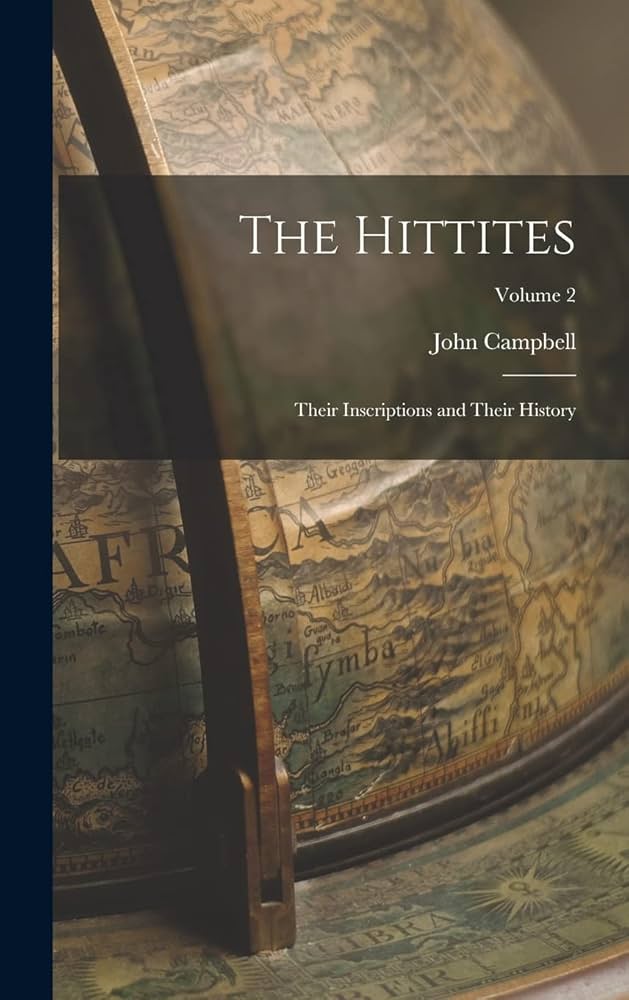
Without belaboring this subject, referring to historical sources, we can assert that Armenia was a geographic area that was populated by different peoples and all of them had nothing to with present day Armenia or Hayastan (Armenian version of their country’s name).
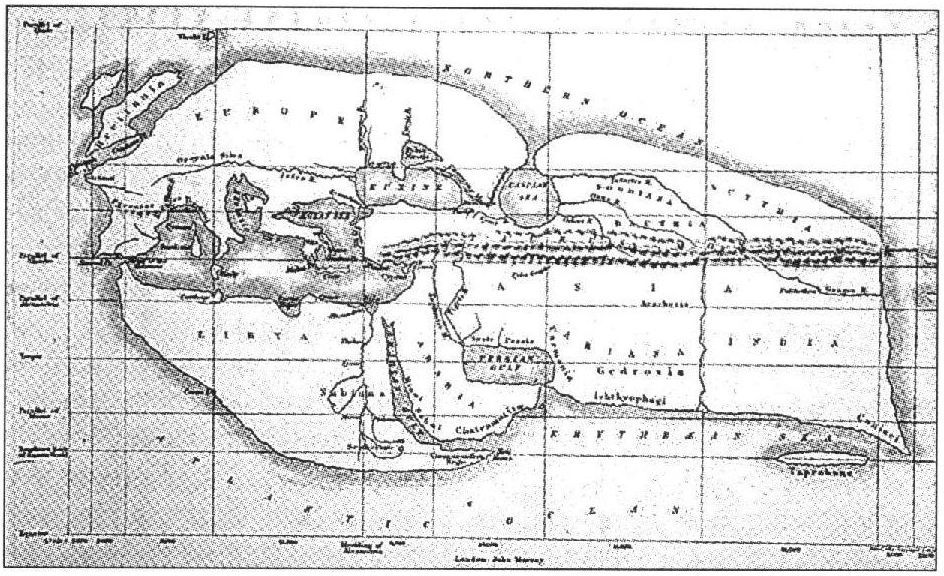 “Strabo’s Map”
“Strabo’s Map”
According to various sources, the Armenia of the year 301, of which Hays are so proud, was a vassal-colony of the Great Roman Empire. Trdat, who governed this vassal entity, had launched a violent persecution against those who converted to Christianity. This fact shatters the myth that in the year 301 or 302, Christianity was the official religion in the area known as Armenia - an area that had nothing to do with the Hays. Historical facts indicate that in the early days of Christianity, there were no followers of this religion across the geographic area known as Armenia. By the way, although the Gregorian Church was founded by Gregory, this fact is also disputed because Gregory was not an apostle, so the church cannot be called Apostolic. And as a final point, there is no mention of Armenia, Armenians, Hays, or Hayks in the Christian holy book - the Bible.
3) The author alleged that Armenian Christian sites have a millennia-long history and, according to Reuters and the Bible Museum, 400 Armenian churches or sites have been attacked and are in danger.
This information is entirely false. First of all, the presence of Armenians in Karabakh did not begin until 1828. There is plenty of information about this, but since it is not the primary focus of this article, we will leave it with one quote. In his work, N. Shavrov, a native of Saint Petersburg and then the Russian Ambassador in Tehran, as well as a scholar, wrote: “We began resettling in the Trans-Caucasus not Russians but other peoples. After the war of 1826-1828, in just two years, between 1828-1830, over 40,000 Armenians from Iran and 80,000 Armenians from Turkey were resettled in fertile areas with few Armenians - the Ganja and Irevan provinces, and the Borchaly, Akhalchiki, and Akhalkelek regions of the Tbilisi province. It must be noted that including unofficially relocated Armenians, the total number of Armenians officially resettled reaches 124,000, bringing the overall Armenian population to 200,000. By the end of this century, of the 1.3 million Armenians living in the Trans-Caucasus, over one million were not indigenous to this region; they were those whom we resettled.”
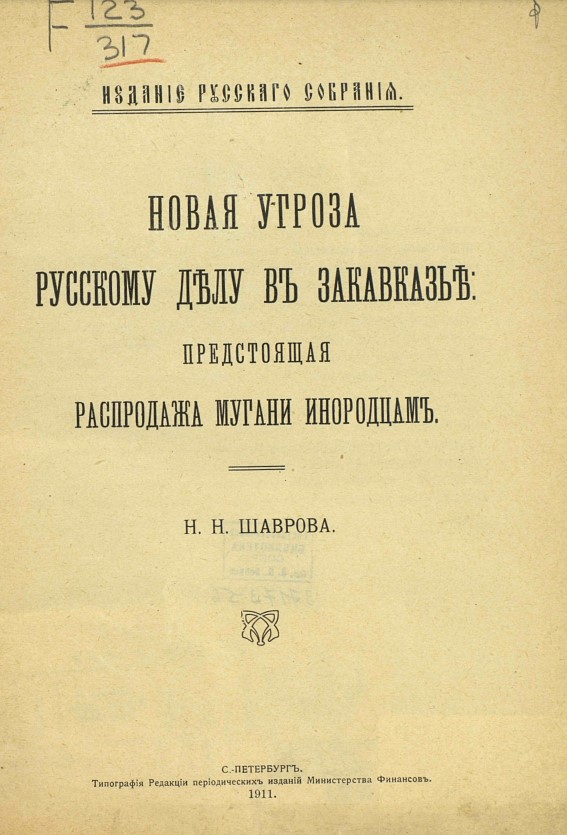
If we are speaking not of fake Armenian religious sites but historical Albanian shrines, indeed, there are 54-56, not 400, “Armenianized” Albanian shrines whose history has been doctored. There are plenty of historical documents regarding the external appearance, shape, and history of these shrines that belong to Ancient Albania. The state of Azerbaijan made a decision to protect those sites after it completely restored its sovereignty. We will soon present a comprehensive investigation on the mentioned monuments and sites.
Let us address the author’s claims regarding the “altering” of the monuments and “erasing Armenian heritage” by citing just one fact. According to the author, the Church of the Holy Savior (Ghazanchetsots, according to Armenians) was completely destroyed, under the guise of restoration, once Azerbaijan regained control of the city of Shusha (the author uses the misleading name of Shushi).
This is completely false information.
Gazanchy – According to historical sources, until 1722, at the site of the current Gazanchy Church, there was a single basilica shrine that belonged to Albanian architecture. In 1858, upon the orders of the Russian command, a bell tower was built here, and the premises began to be used as a church by the Russian soldiers. The bell of the church was commissioned by the Russians in the city of Tula, Russia, and delivered to Shusha. Armenians admit to this fact. However, due to its size, the Albanian shrine couldn’t accommodate the significant number of soldiers. Some say that the Khan’s Divan was also used by the military along with the Albanian shrine. Such constraints had led to the need to build a church for the Russian military personnel.
In 1868-1887 this Albanian shrine was demolished and a new church corresponding to the Russian Orthodox architecture was built in its stead.
This photo of that church is dated to the mid-20th century, i.e., prior to its occupation by the Armenian armed forces:

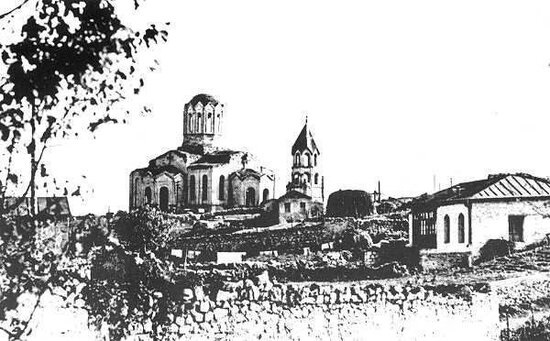
This photo was taken by Armenian journalists on the day Shusha was occupied.
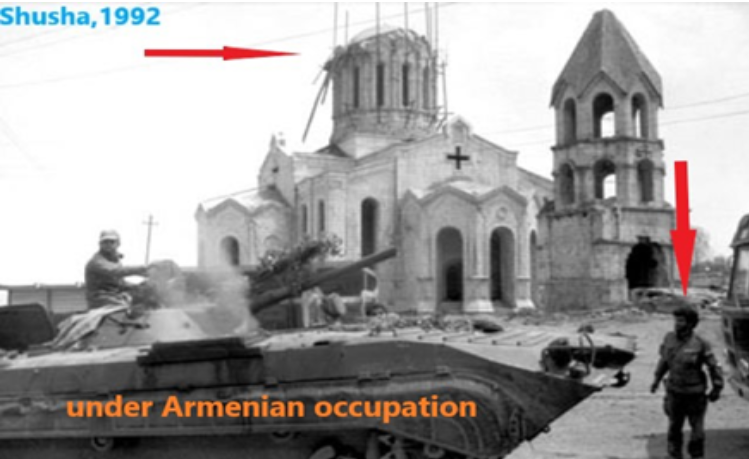
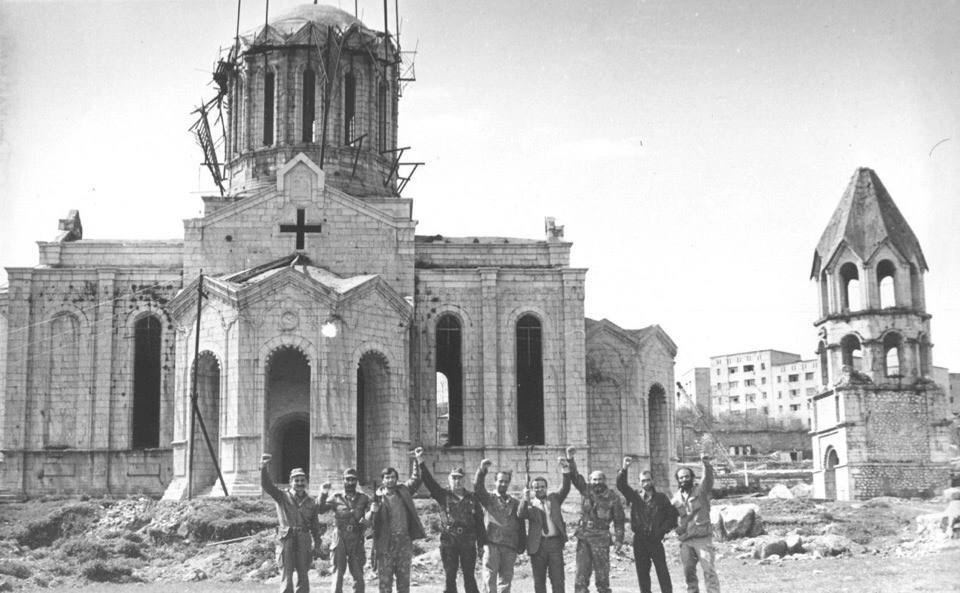
This is the attitude by the Azerbaijani Government to the same historical-religious monument:
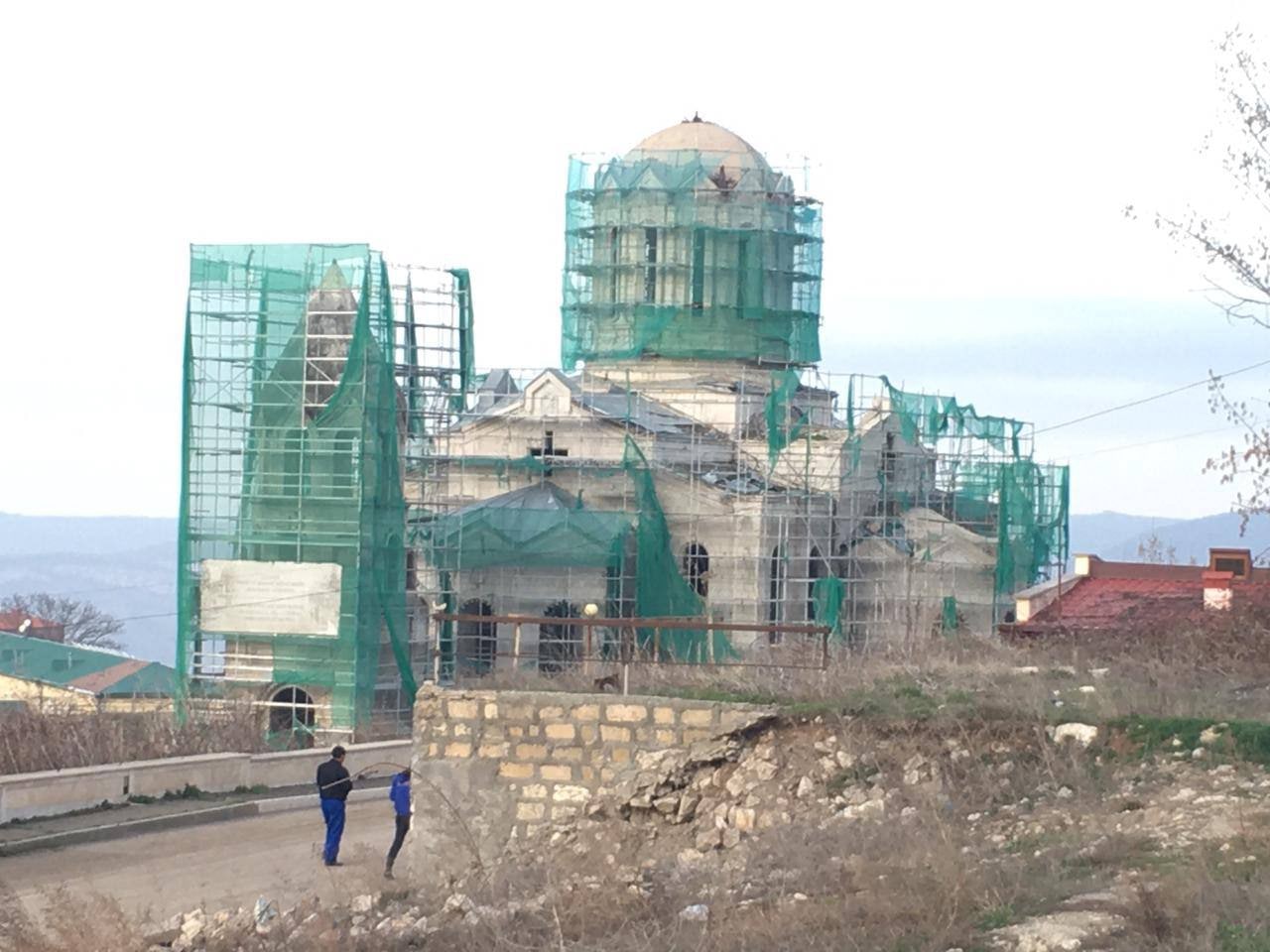
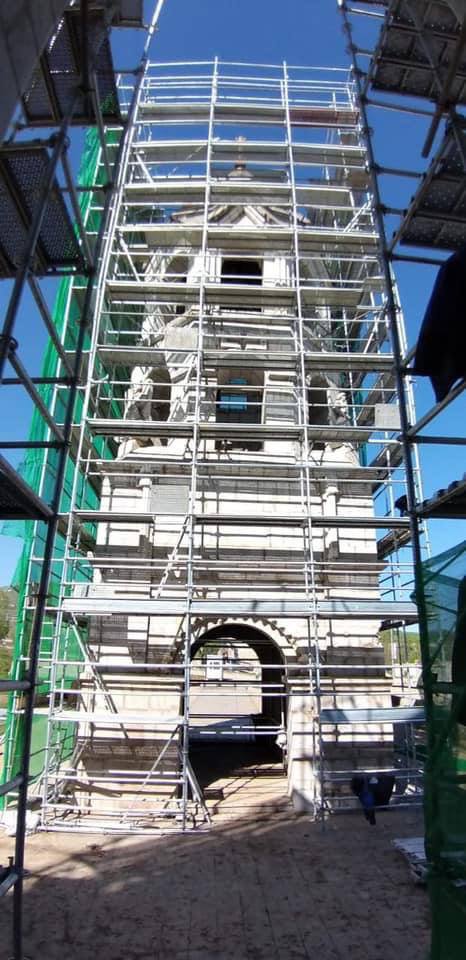
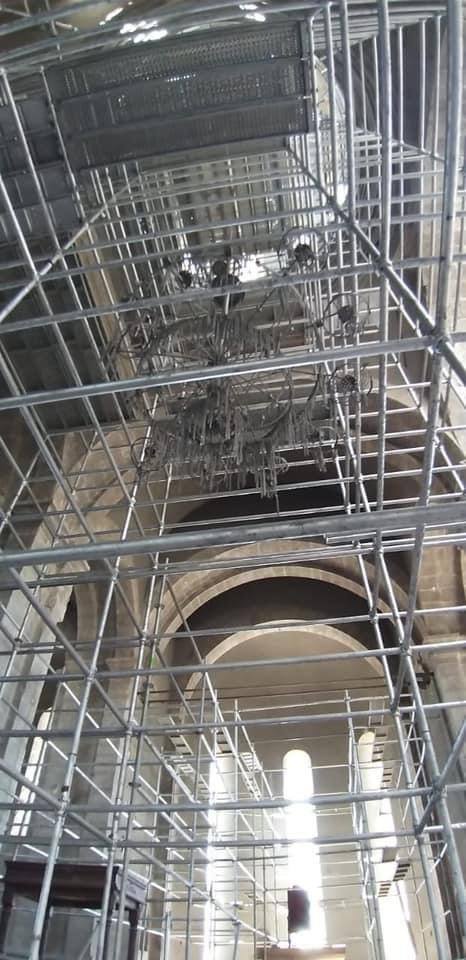

Restoration of the Gazanchy Church in Shusha represents the respect of the state of Azerbaijan for cultural heritage across its territory, including Christian heritage.
As to the author’s claims that the St. Ascension Church in Lachin (the author uses yet another misleading name of Berdzor), it is nothing but a manipulation.
On 18 May 1992, 10 days after the occupation of the ancient Azerbaijani city of Shusha, the district of Lachin fell under Armenia’s occupation. Innocent civilians were murdered, while those who managed to flee lost their entire livelihoods.
In 1998, Armenians built that very church at the site of the house that belonged to a resident of Lachin, Qubad Ibrahimov.
The screenshots below are of the title deed issued by the Azerbaijani authorities to that person back in 1988:

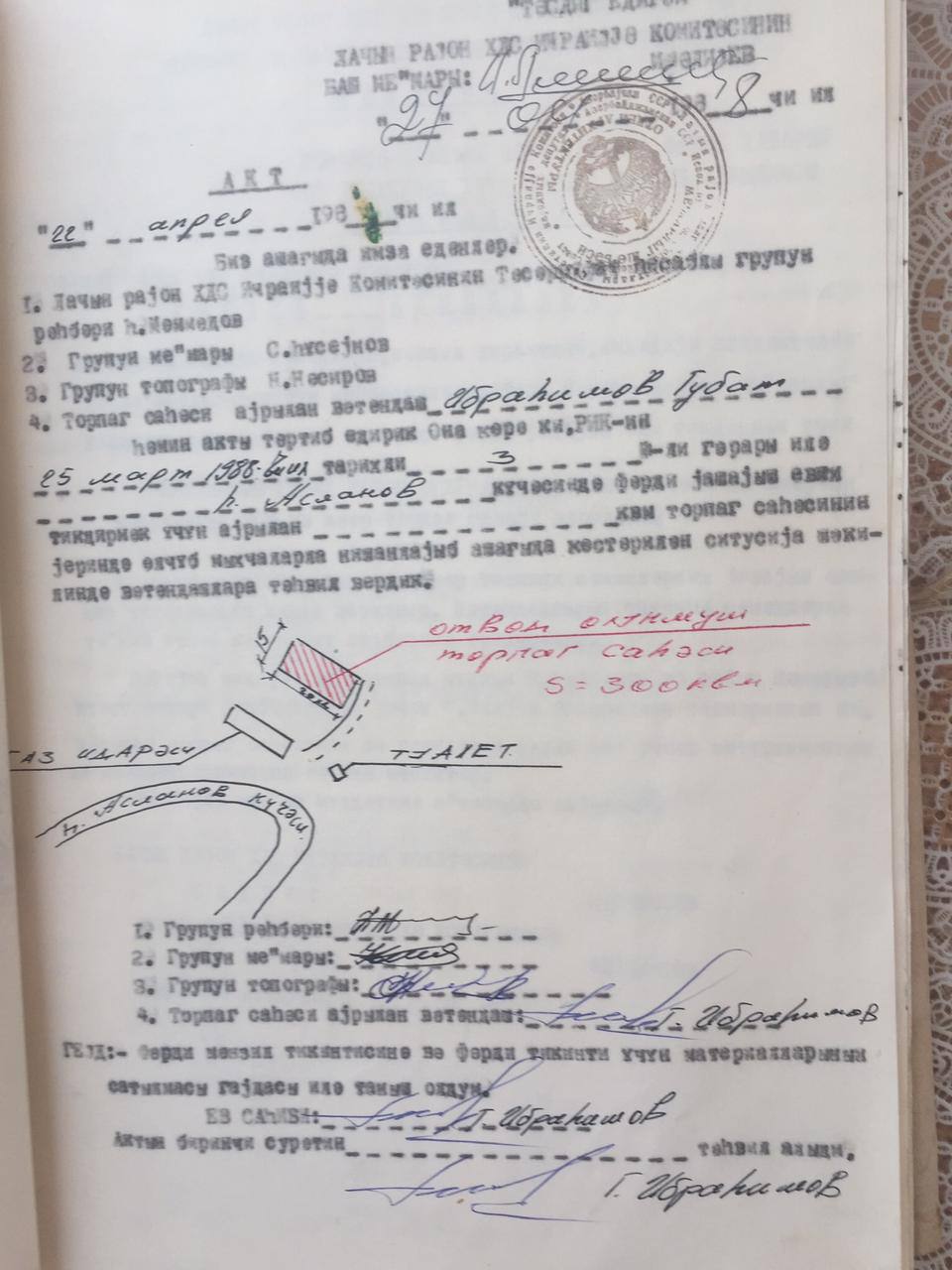
The following photo was taken at the construction site of the future church:
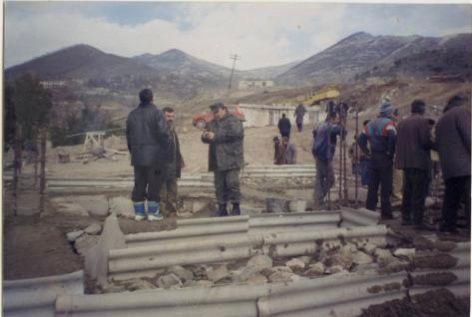
This is the photo of the finished church at the same location:
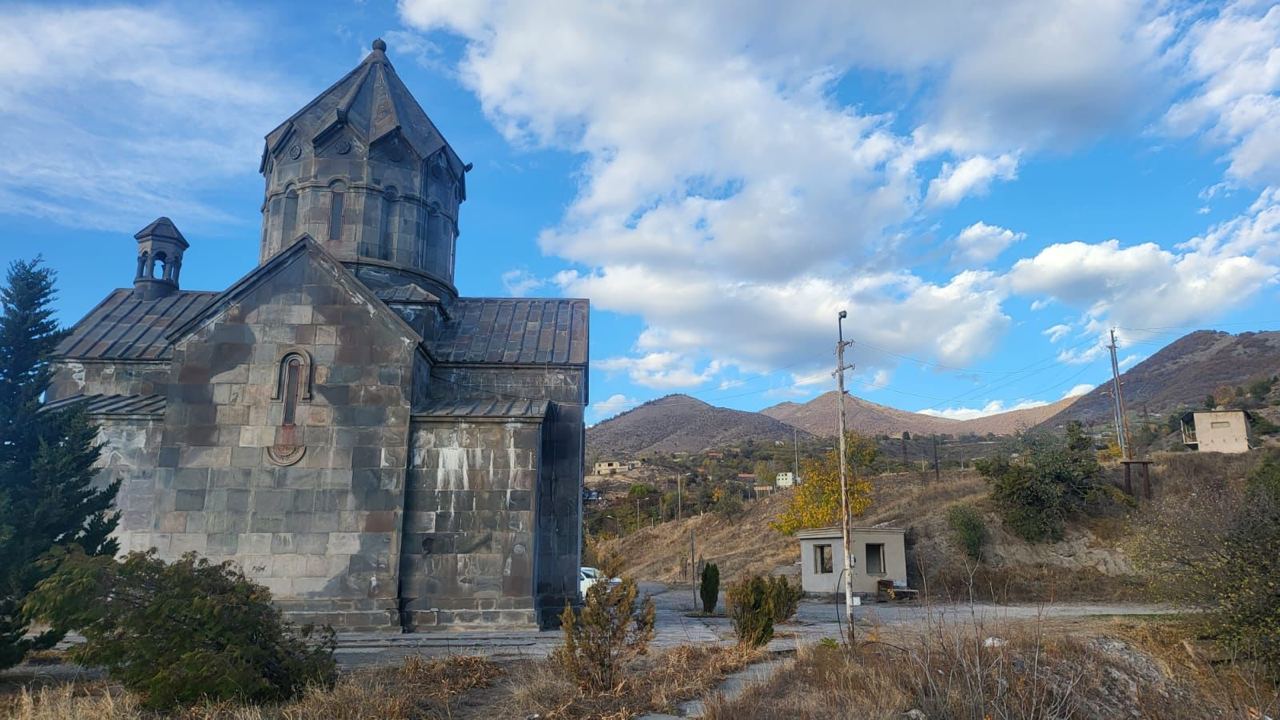
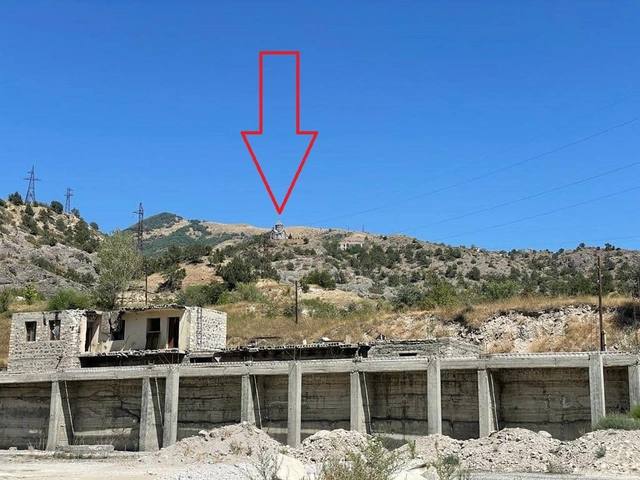
So, the church in Lachin is 26 years old, built on the site of a demolished home of someone who lost everything as he and his family had to run for their lives.
4) “The first genocide of the 20th century, when more than 1.5 million Armenians were systematically exterminated by the Ottoman Turks,” as the author claims, we will not delve into this matter in much detail. We will leave it at the quote by Jeremy Salt, the author of “The True Meaning of Ataturk’s Legacy,” published in Newsweek on 17 December 2023.
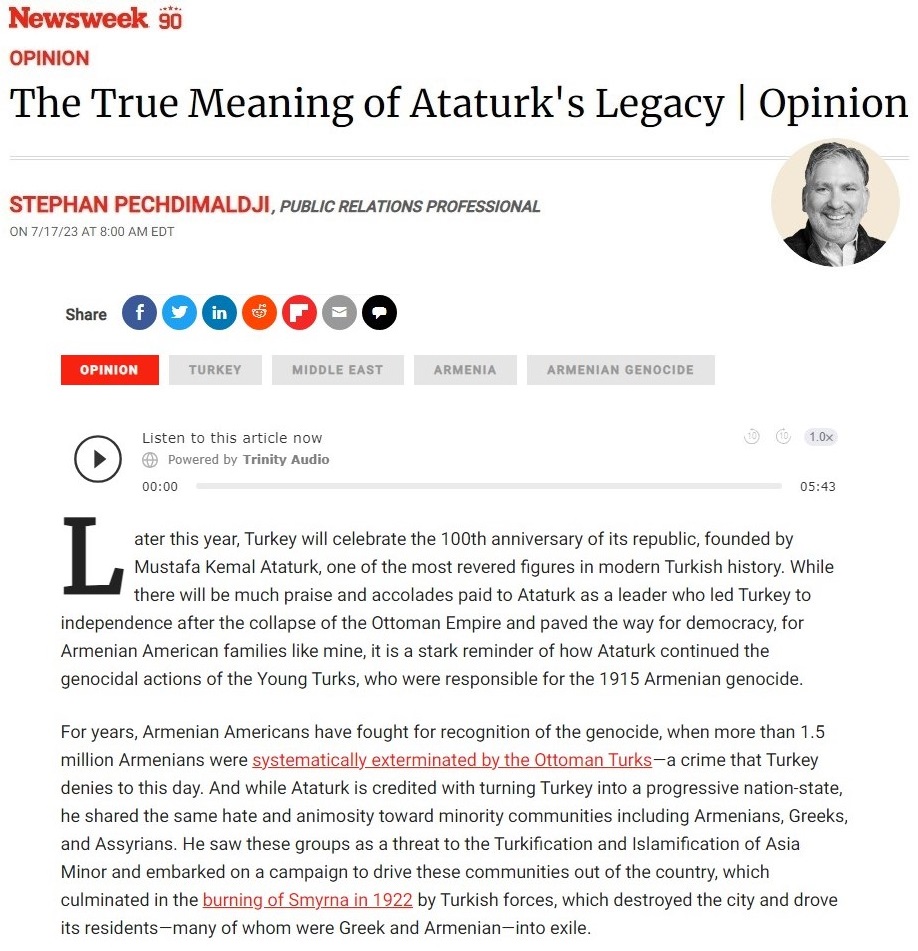
Salt: “Neither were the Armenians “systematically exterminated.” Such an accusation presumably comes from ‘documents’ long since shown to be forged, claiming that a committee of Young Turks met during the war and decided to wipe out all the Armenians. In many parts of what is now southeastern Turkey large numbers of Armenians certainly were slaughtered. Many more died from disease, exposure, or malnutrition, the same three elements that killed millions of Turks, Kurds, and other Muslim ethnic groups. Neither can the large-scale massacres of Muslims by Armenians be left out of the picture, although in mainstream ‘western’ histories they invariably are.”
Conclusion:
• Stephan Pechdimaldji’s Newsweek article titled, “Protecting Armenian Churches in Nagorno-Karabakh Should Be a Condition for Peace,” is abundant with serious distortions regarding Azerbaijan, misleading and false information. It is a biased and lopsided piece.
• Newsweek flagrantly violated two core principles of journalism: impartiality and the dissemination of accurate, verified information.
• In this article, Stephan Pechdimaldji included seven falsehoods, distorted geographic names on three occasions, and leveled false and groundless accusations against Azerbaijan four times.




















